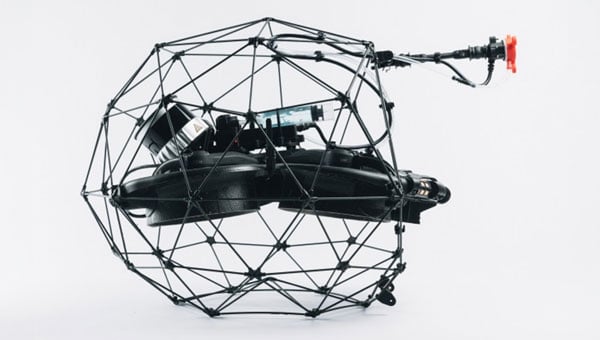What3words gets competition in Xaddress
Last year, I wrote about a revolutionary addressing system called what3words. I thought that the concept was brilliant in its simplicity and was embarrassed that I didn’t think of it — or at least that someone with a GISP attached to their name didn’t think of it (certified geographic information systems professional).
It was, in fact, invented by a musician who got tired of not being able to find the exact location of his next gig.
What3words certainly made its mark. Since 2013, what3words has received numerous high visibility tech awards and raised more than $13.5 million to expand its use. It’s being used by the United Nations, many commercial shipping firms, Google and Esri. What3words even attracted the personal interest of Prince William and Kate.
Some naysayers point to the lack of accuracy and precision (only as good as GPS, so not perfect), but what3words has opened a lot of eyes and has even become the addressing standard for the entire country of Mongolia.
Although some parts of Mongolia are very modern, like the photo to the right, the majority of the country is still isolated with no street addresses, not to mention a nomadic population.
Other challenging location problems include specific homes in third-world shanty towns, such as Rio’s favelas, or weekend tailgating locations at college football games.
The bottom line is that we need reliable universal addressing primarily for locations that are not adequately served by conventional street addresses. Most agree that numeric Lat/Long coordinates are the simplest and shortest description of a position on Earth, but there is one big problem. Humans have a hard time remembering and relating to long strings of numbers. Additionally, communicating long number strings can be difficult with little or no way to error check the results other than maybe a checksum digit.
Numerous systems have been developed to provide understandable and memorable addresses, but what3words seems to have received a lion’s share of the public interest. Others on the “me too” wagon included systems such as Geohash, Mapcode, Openlocationcode and Xaddress. All encode a set of coordinates into more humanly memorable descriptors.
Although I’m pretty much sold on the utility of what3words, recently released Xaddress, which Paraguayan founder Roberto Dam placed into the public domain this year, has benefits that make it a strong contender.
Why Xaddress?
First, I have to preface that I’m not a programmer, and my experience with GitHub and the correspondingly technical community is limited. I struggled with the encoding and decoding process used in Xaddress, since its key selling point is that it is a process that doesn’t require a computer or even a smartphone.
After reading and mucking around the internet, I ran through a number of rabbit holes and trails with geohash, hash-tagging and spatial math discussions that led me to mathematician Felix Klein and his famous Klein’s bottle (which has nothing to do with this issue, but in which I felt trapped).
I then read discussions about the value of mnemonics and how it helps humans relate to complex numbers or other difficult memory tasks. This is where both what3words and Xaddress share a common trait — they both display locations using memorable words. But Xaddress adds four new wrinkles:
- Although the encoding and decoding of a location into an Xaddress is most easily done using the algorithm on a computer or smartphone, the process can be done manually. It’s not quick and easy, but it can be done.
- The Xaddress also contains a visual graphic object or avatar that is used as a visual error check. If you get the address slightly wrong, the avatar displayed will be completely different. Here is a sample showing slight differences in the number resulting in completely different avatars.
- Xaddress also adds the city/country to identify the rough location. (Of course, this could also be done with what3words.)
- Lastly, Xaddress is an open-source system, unlike the patented what3words system.
There is much more to Xaddress than I can cover in this short column, so you may want to read Roberto Dam’s more detailed article describing the inner workings of Xaddress. (The numeric to word-encoding process is a bit hard to follow, but give it a chance.)
There is extensive technical information, discussions and code on GitHub.
Additionally, the Xaddress website has numerous other examples and references, and you can try encoding your own addresses.
According to NGOs, the majority of the Earth’s population, an estimated 6 billion people, have no address. In third-world countries of Africa, the Middle East, South East Asia and Latin America, it’s difficult to do the things we take for granted, such as receiving mail, getting parts or supplies to start even a simple business, and — even more critical — getting emergency responders to a fire or medical emergency.
Perhaps, like cellphone technology permitted third-world countries to skip the effort and expense of landlines, new addressing systems may be a shortcut to leapfrog universal addressing.
























This looks very similar to the World Geographic Reference System See:
Clarke, K. C., Dana, P. H. and Hastings, J. T. (2002) A new world geographic reference system. Cartography and Geographic Information Science, vol. 29, no. 4, pp. 355-362.
This looks very similar to the World Geographic Reference System See:
Clarke, K. C., Dana, P. H. and Hastings, J. T. (2002) A new world geographic reference system. Cartography and Geographic Information Science, vol. 29, no. 4, pp. 355-362.